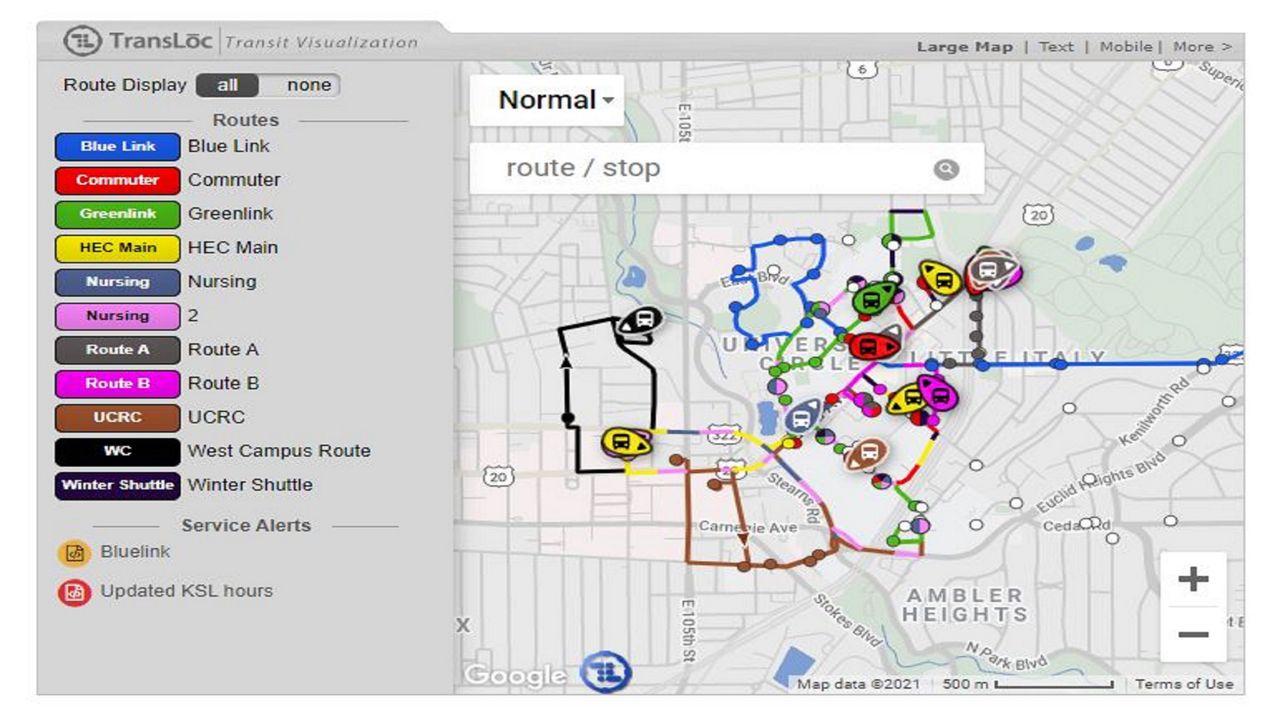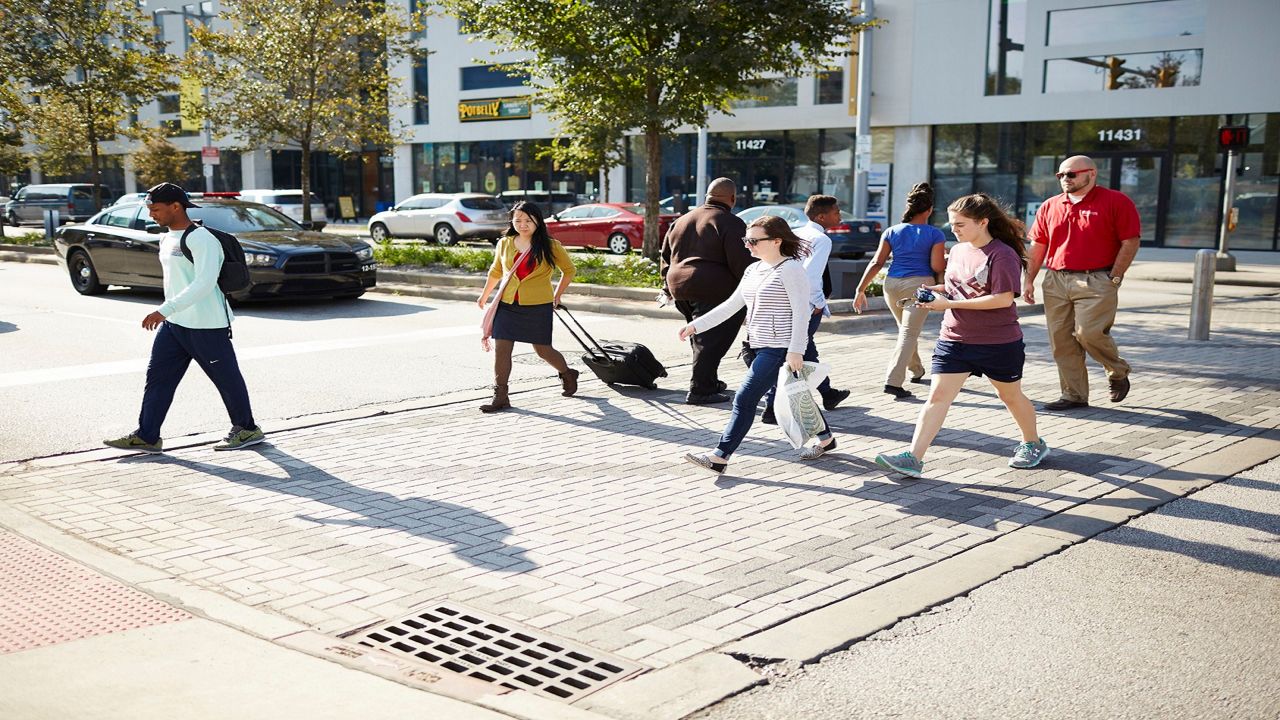CLEVELAND – University Circle residents are taking safety seriously after data revealed a startling increase in accidents involving vehicles, pedestrians and cyclists over the past few years.
What You Need To Know
- After multiple pedestrian accidents took place in three months last year, the University Circle community launched Project Yield, a multi-faceted campaign to reduce accidents
- Viewed as Cleveland’s arts and cultural neighborhood, University Circle covers a square mile that’s home to the Cleveland Clinic, University Hospitals, the VA Medical Center and Case Western Reserve, drawing people to work at about 50,000 jobs
- Project Yield features speed limit reminders and digital speed signs as well as bumper stickers cautioning drivers to yield to pedestrians and an app identifying where shuttles are in real time
- Project Yield also features an online database of “close calls,” where people can submit reports about their experiences around Cleveland, which populates an interactive online map
While an average of 20 pedestrian accidents happen in University Circle each year, last year was unusually high, said Annie Pease Director of Transportation for University Circle Inc. (UCI), a member-driven community development corporation. In three months, 10 accidents took place in which pedestrians in crosswalks were hit, or nearly hit by cars.
Further researching vehicular accidents, UCI officials analyzed University Circle data from 2015 to 2019 and found that while car crashes, such as fender benders, had declined by about 25 percent, accidents involving pedestrians had increased 33 percent, Pease said.
UCI handles an array of needs for those who work and live in University Circle, Pease said.
“We help connect people to the assets and the experiences that many of those organizations create,” she said. “And then on top of that, we have an eye out for things like public safety and workforce access, a little bit above and beyond strictly promoting what the institutions do.”
UCI officials also learned that the risk of being injured when two cars collide is about 25 percent, Pease said, but when a pedestrian is involved that climbs to 90 percent.
Last November, the community took action and launched Project Yield -- a multifaceted campaign to try to bring accident rates down, she said.
University Circle’s streets and sidewalks are busier than most neighborhoods.
Viewed as Cleveland’s arts and cultural neighborhood, University Circle covers a square mile packed with what residents call “med and ed.” That includes the Cleveland Clinic, University Hospitals, the VA Medical Center and Case Western Reserve among other schools, said Elise Yablonsky, UCI planning director.
Within that mile, University Circle is also home to the Cleveland Museum of Art, the Cleveland Museum of Natural History and the Cleveland History Center, Yablonsky said. It also houses about 40 nonprofit organizations and, with Little Italy at its eastern border, dozens of popular eateries.
“We’re a pretty unique neighborhood in terms of our employment density and institutional density,” she said.
Under Project Yield, UCI began by raising awareness, posting speed limit reminder signs in hot spots and digital signs that flash the speed of individual motorists, Pease said.
Because workers are drawn to the area to fill about 50,000 jobs, UCI also partners with many of the institutions and businesses there to operate a free shuttle service, to boost safety and promote sustainable transportation, Pease said.

With so many fleet vehicles in the area, from landscaping trucks to delivery vehicles, Project Yield printed bumper stickers that read “This vehicle yields to pedestrians.”
Residents can also use an app to identify where fleet vehicles, including the shuttles, are in real time, which is helpful for people who wait for the shuttle and other public transportation, she said.
And Project Yield isn’t just for residents, she said. Anyone who travels to or around University Circle can participate by signing up online, where they can also request a bumper sticker.
Another feature of the project is an online database of “close calls,” where people can submit reports about their experiences, she said.
“Road safety interventions rely on crash data,” Pease said. “We want to have better documentation of the very traumatic and scary close calls or ‘I was almost hit,’ to better inform our advocacy and interventions that we push for, ultimately to calm traffic in these problem areas.”
The result is an interactive crowdsource map of close calls all over the Cleveland area, which can be viewed online.
A component of Project Yield Quarterly is public meetings, with the next meeting scheduled for April. For more information, visit the UCI website.



